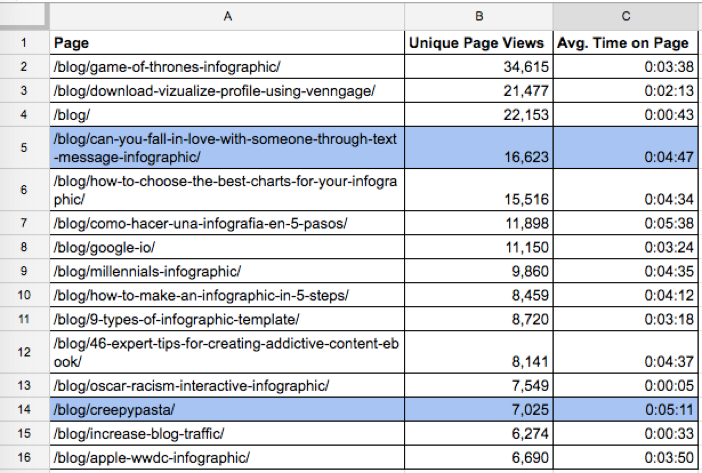- Share Why It’s Worth Writing for a Niche Target Audience on Facebook
- Share Why It’s Worth Writing for a Niche Target Audience on Twitter
- Share Why It’s Worth Writing for a Niche Target Audience on Linkedin
- Share Why It’s Worth Writing for a Niche Target Audience via email
How many “10 Tips to Supercharge Your Content Strategy” and “15 Essential Content Marketing Tools” articles have you seen this week? How about today? I know I’ve read countless articles of this flavor and I’ve written my share. Yes I get sick of it.
A lot of these quick-tip/how-to/listicle articles do have value, even if they rehash the same topic again and again. Some information is worth repeating because it’s important. But I don’t have to tell you a lot of content out there is just the same couple of basic points, remixed and re-released into the fray, only to be swallowed up by the crowd. Because let’s face it, when you publish content, the crowd doesn’t stop; in a matter of minutes, throngs of newer content will have already overtaken your content.
That’s such a waste—not just a waste of your time, but a waste of an opportunity to have reached people who want more content written. I’ve written a lot of one-off articles, particularly when I first started as a content marketer. Some of them performed well; others disappeared into the void.
What I found was that the articles that didn’t disappear—the ones that continue to pull in traffic months after they were published—had one or both of these characteristics: 1) they offered something new to readers, and/or 2) they were written for a niche target audience.
This article is going to talk about the second characteristic which, in many cases, also leads to the first.
Tell stories that haven’t been told yet
A basic tenet of good writing is to look for stories waiting to be told. This doesn’t necessarily mean finding an entirely new topic; it could simply mean finding a new and original angle. But there are some niches that simply haven’t had a lot of writing done about them—something BuzzFeed in particular has been excellent at identifying. This is an opportunity to write something entirely new.
Just because your writing tends to fall under one subject, such as SEO or growth hacking, doesn’t mean you can’t apply your savvy to a new audience.
Here’s a case study of two of my own articles:
I’m on the marketing team at Venngage infographics, but not everything I write about is strictly about infographic creation and marketing strategies.
In June I delved into a very niche topic by conducting a study about creepypasta for the Venngage blog. Creepypasta is a genre of internet horror stories characteristic for their urban myth-type format and viral sharing. The article and accompanying infographic looked at the common “ingredients” found in popular creepypasta stories. Then I talked about how those elements could be applied more broadly to writing for any genre, tying it back into content marketing.
No one had done a similar study on creepypasta before (very few studies have been done about creepypasta in general) and no one had created an infographic about it. Because I targeted “creepypasta” in the article’s keywords, people searching that term continue to land on my article.

Another most viewed article of Venngage’s focused on a study our team conducted back in February seeking to answer the question: can you fall in love with someone through text message? The study played off a New York Times story that went viral two years ago, but updated it to appeal to a niche target audience. While dating apps are certainly gaining popularity, the people who regularly use them are still a minority. Despite a shrinking stigma against online dating, only 15% of adults actually use dating sites and apps, so the audience is still quite niche.
Psychology Today did a write-up of Venngage’s study, and that article continues to drive people to our blog.
Bottom line: look for a niche topic that interests you or that you haven’t written about before. Then, find a spin that makes it relevant to that niche target audience while still remaining relevant to your site. Not only will this make your job more interesting, but it will bring your site a whole new audience.
Start broad and narrow it down
Ok, so you know you want to write about a niche topic but you’re not sure what that topic should be. A good way to find niche topics is to start broad and then drill down until you end up with a niche.
How do you start broad? Try surveying a large number of potential topics through curation. For example, say you decide to write a curated post about 20 marketing how-to videos that every marketer should watch.
Say one of those videos uses a sneaker company in one of their examples. This enlightens you to an entire subculture of sneaker enthusiasts. You realize there is a whole art to taking compelling product shots of sneakers. Your next article could be about how to take awesome photographs of sneakers—an article that would be useful for collectors, marketers, and small business owners.

And writing about sneaker photography doesn’t have to mean going totally off the beaten path. You can still easily link it back to your main niche target audience in a relevant way, while also targeting the new audience.
Bottom line: finding a niche topic doesn’t have to mean starting from scratch. Look for links to niche topics from broader topics to create content that is specific but still relevant to what you know well. This makes for a more rounded content strategy. (To construct a comprehensive content strategy, check out the Content Marketing Pyramid.)
A small audience means less shares, but more long tail traffic
Now here’s the catch.
The creepypasta and falling-in-love-through-text-message articles didn’t get as many initial shares as other articles on the Venngage blog.
In the month and a half since it was published however, the creepypasta article consistently ranked in the top 15 most viewed articles on our blog, and the love study article has consistently been in the top five.
Every time someone looks at both articles, they see the infographics front and center. If they’re an audience that doesn’t have a lot of infographics made for them, this is exciting. The articles offer unique value to those audiences while also demonstrating our product.
In fact, the average time spent on page for both articles is significantly higher than our blog average.
That’s because content written for an audience that already has a large following needs to compete extra hard with existing content, and content that will soon exist. Content created for an audience with less content is more likely to be seen in the first place.
There are certain cornerstone articles that are constantly referred to in an industry niche: they act as references for the many articles rehashing the same topic. For example, in SEO it’s Jon Cooper’s Link Building Tactics article, Brian Dean’s Skyscraper Technique article, and Nadya Khoja’s 37 Proven Methods to Increase Blog Traffic article.
If you create content for an audience that doesn’t normally get a lot of content, and you take care to write something meaningful and actionable, you have the opportunity to create cornerstone content for that audience—content that they will refer back to time and time again.
Bottom line: yes you want most of your traffic to be relevant leads. But throwing in a special interest article every now and again can kickstart brand new traffic—traffic that will continue to trickle in over time. And you can still make it relevant to your site’s product or service.
You have to do some of the leg work
So you’ve written something for a niche target audience and targeted a specific long tail keyword. The problem is, your article isn’t going to rank on Google searches until people start viewing it and linking to it.
If your current content marketing strategy is simply to publish an article and send it out into the ether, that’s a problem you have to tackle first. But if outreach is already a part of your content strategy, you know virtually every article you publish needs a boost at the beginning. Articles written for a niche audience are no different.
Compile a list of contacts for different sites within that niche to reach out to. These don’t have to be small sites—often larger news sites will be interested in writing about a niche topic because it’s interesting and different.
For example, to promote the creepypasta article Venngage reached out to pop culture sites, movie sites, and tech/internet culture sites. In total, we reached out to about 150 sites and got six backlinks. For the love article, we reached out to around 150 sites and got five backlinks. Those are actually a pretty decent number of backlinks for each article; about 90% of outreach emails don’t even get a response.
It’s not enough to just promote your content—you also have to measure its performance. If you’re not attracting adequate traffic from a niche target audience to your content, the impact will be greater than if your content is targeting a bigger audience. That’s because less people in general are going to be searching keywords related to your niche topic than a more popular topic, so you need to make sure your page is one that people in the target audience are landing on.
When it comes to measuring content performance, counting social shares isn’t enough. In fact, social shares are largely vanity metrics. One of the best ways to measure how well content is performing is to count how many backlinks it gets using tools like Buzzsumo or Moz.
Bottom line: To get readers’ eyeballs on your content, you need their attention. Reach out to relevant sites—not only will this get you backlinks, it will also help you make new contacts. Measure those backlinks to see how your content is performing.
Mix it up from time to time: write for a niche target audience
Niche writers usually write because they’re passionate about it. But sometimes you need a break from something you’re passionate about for your content to remain fresh. Reaching out to a new target audience is exciting; it’s a new beginning where you learn new things—and it’s beneficial to your business. You can target niche audiences in a systematic way when you have a well thought out content marketing strategy, such as can can be found in the Content Marketing Pyramid eBook, downloadable below.










